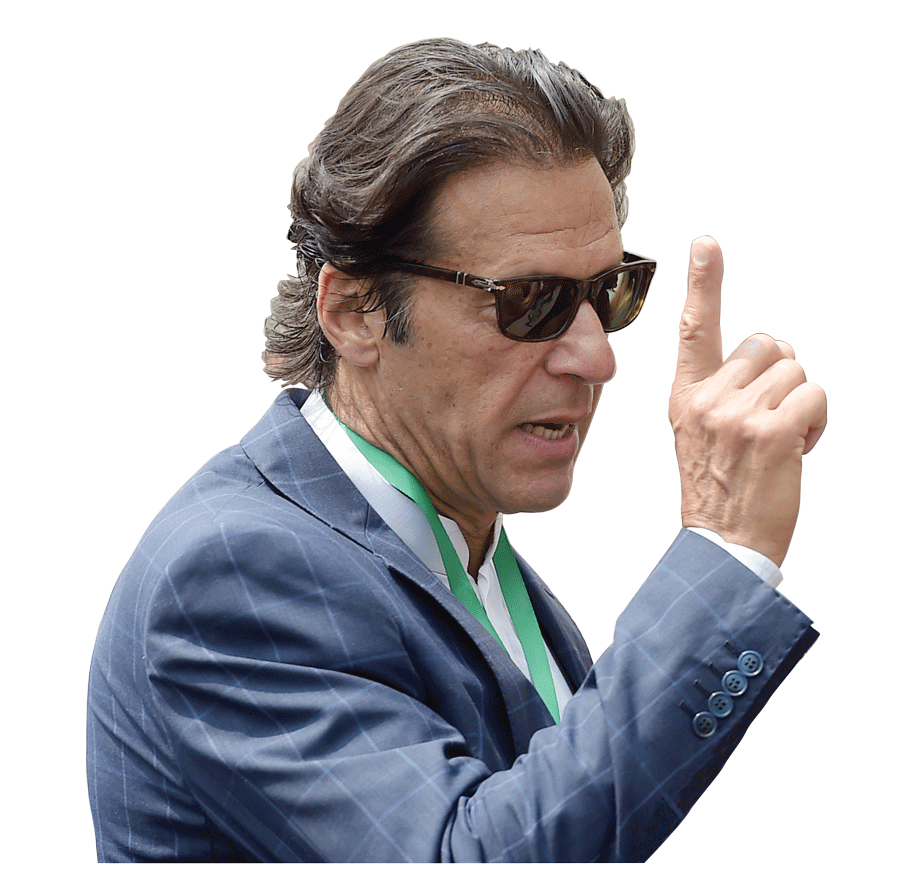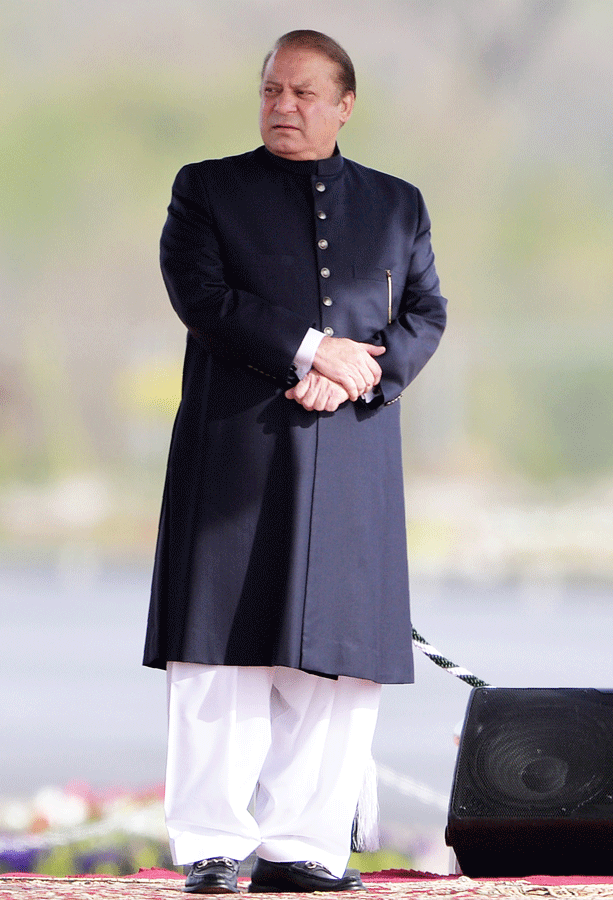Clash of the Titans
By I. A. Rehman | Newsbeat National | Published 7 years ago
 Punjab is divided as never before. The fight for the province’s leadership between two political factions has turned into an all-out war and the outcome will have immense repercussions on the national politics.
Punjab is divided as never before. The fight for the province’s leadership between two political factions has turned into an all-out war and the outcome will have immense repercussions on the national politics.
The PML-N that has controlled the country’s largest and richest province since 1988, except for the period 2002-2008 when another League led by the Chaudhries of Gujrat held the province in the Musharraf camp, is under pressure from more than one source. It is being challenged by another faction of Punjab’s elite — Imran Khan’s PTI. The tussle between them is not substantially different from earlier intra-Punjab conflicts.
Such divisions had erupted on the very morrow of independence in the form of a clash between Iftikhar Husain Khan of Mamdot, who had become West Punjab’s (as the part of the Punjab falling to the share of Pakistan was then called) first post-independence chief minister, and finance minister Mumtaz Daultana. Mamdot had become the chief minister by virtue of his having been the head of the provincial Muslim League ever since the previous incumbent’s (his father’s) death in 1942, and Mumtaz Daultana coveted the office because he considered himself better qualified to lead the province.
The federal government could not ignore the rift that greatly annoyed the Quaid-i-Azam, but when the latter’s advice was ignored he washed his hands off Punjab’s affairs. Matters came to a head in 1950, when Mamdot resigned from his office and governor’s rule was imposed. Since this was much too soon after independence, while the democratic rhetoric of the movement for freedom was quite fresh in the minds of the people, the Muslim League’s second rank of leaders forced the centre to accept their nominees as the governor’s advisors.
Within no time, the central government of Liaquat Ali Khan got involved with the Punjab infighting. Whether the attacks on Liaquat Ali Khan and his wife by Mamdot and Hameed Nizami of Nawai Waqt compelled the prime minister to support Daultana or whether the Mamdot-Nizami alliance materialised in response to the formation of a Liaquat-Daultana axis is not clear. What can be said with some certainty is the fact that since 1950 the central authorities or notables have had something to do with intra-Punjab squabbles.
Mamdot resigned from the Muslim League and founded a new party, Jinnah Muslim League. Subsequently he faced a series of corruption charges and was thrown out of politics under the Elective Bodies Disqualification Order. But in 1951, the main issue was Mamdot’s challenge to the Daultana-led Muslim League in the election to the Punjab Assembly, in which the Muslim League government at the centre was manifestly interested.
It should be profitable to recall how extra-provincial forces intervened in Punjab politics in 1951. General Ayub, the army chief, who was never in the good books of the premier and defence minister, Liaquat Ali Khan, won him over by disclosing the so-called Rawalpindi Conspiracy, that he had kept under wraps for some time, to help Liaquat and Daultana in the Punjab election and also pave the latter’s way to the chief minister’s office. It was Gen Ayub Khan’s first foray into politics and he never looked back until he had destroyed the state’s democratic foundations.
The 1951 Punjab election was also notable because of the use of bureaucracy to help the Muslim League candidates’ gain victory, while labour leader Mirza Ibrahim’s, defeat in a Lahore constituency was secured by open rigging. In a way this election set the pattern for nearly all elections in Pakistan. This was the initial fallout of the first intra-province divide in Punjab.
Punjab was divided once again, soon afterwards. When Liaquat Ali Khan was assassinated in October 1951, finance minister Ghulam Mohammad and Gurmani, Punjab’s godfathers at the centre, carried out changes at the top without taking chief minister Daultana into the loop or going through any formality. (Ghulam Mohammad replaced Nazimuddin as the governor-general and the latter was made prime minister).
Failing to develop a rapport with Nazimuddin, of the kind he had had with Liaquat Ali Khan, and to harass the premier, Daultana divided Punjab along religious lines by inducing the Ahrars to launch the anti-Ahmadiyya agitation of 1953. He tripped and was obliged to vacate the chief minister’s office in favour of Feroze Khan Noon. Called upon to restore order, Gen Azam Khan took little time to pull Abdus Sattar Niazi out of the Wazir Khan mosque, and a military court sentenced Maulana Maudoodi, among others, to death. The sentence was revoked eventually but the military had gained experience of running a martial law regime and of trying civilians by military courts.
Punjab was next divided over governor-general Iskander Mirza’s decision to instal Dr Khan Sahib as the West Pakistan Chief Minister. The dominant Punjab group in the One-Unit assembly, comprising devout Muslim Leaguers, was opposed to the idea, especially as Dr Khan Sahib had refused to join the Muslim League. The matter was resolved when most of the Muslim Leaguers defected from the party and joined the Republican Party created overnight by Mirza and Gurmani. Another gift to national politics by Punjab’s contestants for power.
Punjab suffered a four-way division in 1970, with two Muslim Leagues, Council and Convention, fighting between themselves in opposition to the People’s Party and a bloc of religious parties. Although Gen Yahya and his security adviser, Gen Omar, tried to influence the outcome of the 1970 elections by helping the rightist parties, the effort was too feeble to have an impact and everybody accepted the PPP’s surprising victory.
The Punjab province was again divided, along with other provinces, in 1977, when an opposition alliance operating under a religious slogan challenged an essentially Punjab-based PPP. The matter was decided by Gen Zia-ul-Haq against the latter and in his own favour.

The election of 1988 too saw Punjab divided between the PPP and the PML-N, the latter in an alliance with religio-political parties that had been cobbled up by Gen Hamid Gul, the ISI chief. After the PPP had led the PML-N in the elections to the National Assembly, the general came to PML-N’s rescue and enabled it to secure power in Punjab. Thus began the PML-N-led Punjab’s defiance of the PPP government at the centre (or the centre’s bid to tame the Punjab government) that led to a confrontation between the two that continued till 1996, when the second Benazir Bhutto government was shown the door.
Punjab was divided next when Nawaz Sharif was overthrown by Gen Musharraf and a large chunk of his party formed yet another Muslim League (PML-Q) to serve the new ruler. This marriage of convenience helped the PML-Q return to power in Punjab in the 2002 election. But in the 2008 election, the PML-Q fell behind PML-N and PPP and its leaders complained of having been let down by the intelligence agencies (by their decision to assume a neutral stance ).
What emerges from this recollection of intra-Punjab conflicts over the last many decades is that such conflicts have often been instigated and / or resolved by the central forces, that religious lobbies have, nearly always, had their fingers in the pie, and that with every election the military’s role in the country’s politics has strengthened.
Although the present intra-Punjab conflict retains some of the features of the earlier divisions discussed above, it also has some special characteristics. First, the environment. The military denies any active role in electoral politics but its assumption of responsibility for internal order prevents it from becoming a disinterested spectator. The strategies of achieving the establishment’s objectives by sacking or suspending democratic institutions or terminating democratic processes, such as elections, have apparently been given up. The façade will be maintained and the desired results will be sought through what Benazir Bhutto used to describe as working from within the system.
Secondly, while the military continues to profess to be neutral, its decision to stand by the judiciary as it puts the PML-N through the accountability process means that the PML-N cannot rely on the ultimate coercive power of the state. That is enough to increase the party’s handicap.
Although the PML-N is unlikely to be wiped out completely, the clash between the two Punjab groups — PML-N and PTI — is fraught with unprecedented consequences. The danger that a largely united Punjab could throw up a strong majority party in the National Assembly has obviously been averted. Such a majority is normally welcomed for it is supposed to guarantee governmental stability. But experience has also taught us to be wary of such majorities; they can blind governments to their deviations from democratic imperatives. They also fuel the ambition of heavy mandate-holders to wield absolute power. Besides, a strong Punjab-led majority would need little backing from the less populous provinces. It should be quite happy with securing the support of a few individuals from these provinces, who could be considered renegades to national / provincial causes by a majority in their provinces.
As things stand today — and they could change before the polling day —the Punjab vote is likely to be divided more or less evenly between PML-N and PTI and there may be quite a few independent winners, though the earlier assessment that the emergence of a large number of independents could lead to the next Prime Minister’s selection from among them (like in the Senate elections) seems to be no longer valid. Now the defectors from the parties, largely from PML-N, are joining rival parties instead of contesting elections as independents. The religious parties have only a couple of pockets in Punjab and, in view of the desertions from PML-N, the new Labbaik party may be required to dip into only a few of PML-N’s marginally held constituencies. Any greater role by this new religious faction is perhaps unlikely.
A hung parliament will relieve the establishment of its anxieties and increase not only the bargaining power of independents but also the role of less populous provinces in the central government. There is nothing inherently wrong in this situation except for the fact that in underdeveloped democracies, parliamentary alliances are made in the narrow interest of party bosses and not even in the interests of the political parties, to say nothing about people’s good.
Pakistan should consider itself fortunate if what appears unlikely comes about and it gets a government strong, sensible and responsible enough to take the unpopular decisions needed to keep the state afloat, though the prospect remains worrisome.
Mr. I.A. Rehman is a writer and activist living in Pakistan. He is the secretary general of the Human Rights Commission of Pakistan Secretariat.


